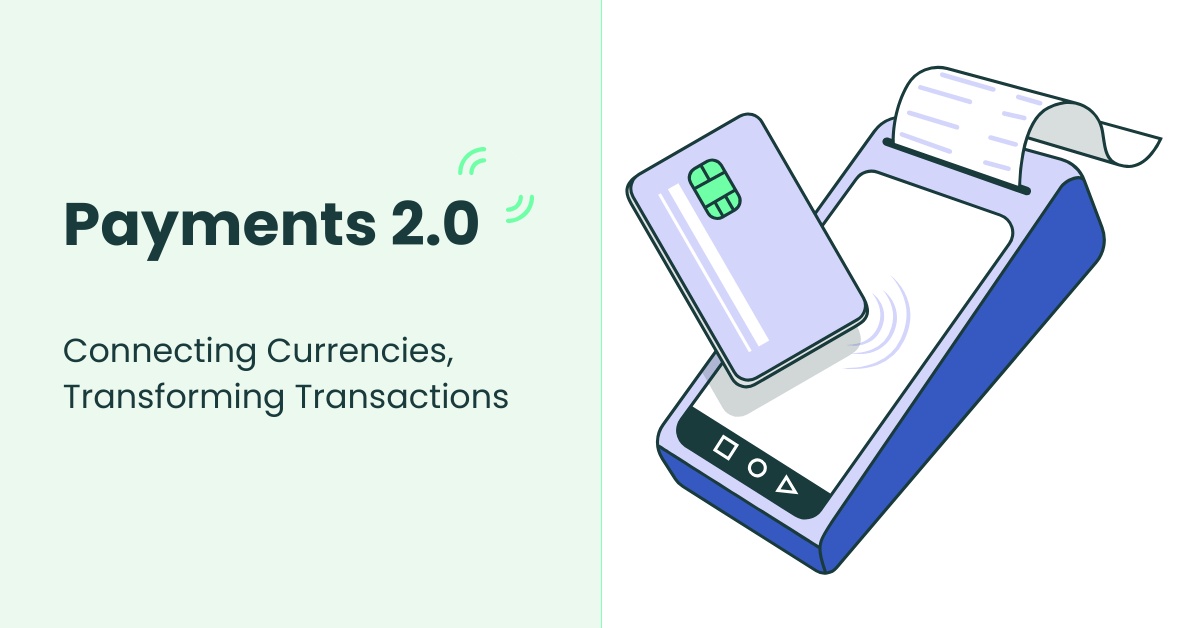Every time we make a payment, whether it’s to pay a bill via direct debit or move some funds into a savings account for example, there’s a lot going on behind the scenes with payment systems. Payment systems are the necessary foundation to secretly move money from one place to another. In the UK, the types of payment systems we use have stayed the same for decades. However, these are undergoing change because of a drive for financial technology (FinTech) that is creating secure payment systems with technology, delivering a number of benefits for all of us. In this article, we’ll define the three types of payment systems and explore how these are being changed by digital currencies and electronic solutions.
A brief history of payment systems
We’ve always had payment systems in some form, even before we used currency. It is believed that the earliest transactions happened before 3000 BC through a bartering system; a method of exchange where goods and services are directly traded for other goods and services. Naturally, this payment system was limited due to the challenge of sourcing what you need if you don’t have an attractive swap for the retailer. The concept of money emerged in ancient Lydia around 600 BC where we saw standardised currency. Fast-forward to the 20th century and the advent of credit cards in the mid-1900s revolutionised payment systems, allowing for electronic transactions. Today, digital wallets, online banking, and cryptocurrencies represent the latest advancements, reflecting the continual evolution of payment systems towards greater efficiency and convenience.
What is a payment system?
A payment system is a set of processes and infrastructure that facilitates the transfer of money between individuals, businesses, or entities for goods, services, or financial transactions. It encompasses various methods, including cash, checks, credit cards, and electronic funds transfers. It operates across different platforms such as physical point-of-sale terminals, online interfaces, and mobile applications. Financial protocols and regulations must be followed to securely exchange funds. Essentially, all types of payment systems play a crucial role in the modern economy. They function as the foundation of all financial exchanges.
What are the four types of payment systems?
We can break down various payment systems into 4 categories:
Cash payments
Physical currency, such as coins and banknotes, is exchanged directly between the payer and the payee. Since the COVID-19 pandemic, the use of cash has decreased. While it’s immediate and tangible, it also lacks traceability and is susceptible to being stolen or lost.
Electronic payments
Transactions are conducted digitally without the need for physical currency. This type of secure payment system includes various electronic methods such as credit/debit card transactions, digital wallets, and online banking transfers. This type of payment system is fast and highly convenient.
Cryptocurrency payments
Cryptocurrency is emerging fast. Digital or virtual currencies, such as Bitcoin, Ethereum, and others, are used for peer-to-peer transactions. These currencies operate on decentralised blockchain technology. It offers the potential for anonymity.
Central Bank Digital Currencies (CBDCs)
Central bank digital currencies (CBDCs) are digital forms of national currency issued and regulated by a country's central bank. Unlike decentralised cryptocurrencies such as Bitcoin, CBDCs are centralised and typically operate within a controlled regulatory framework, ensuring oversight and stability. CBDCs serve as a digitised extension of a country's official currency, maintaining the backing and authority of the central bank.
How do payment systems work?
There are different forms of payment systems that work in different ways. The introduction of online payment systems has created a differentiation from how it worked when we only paid by cash:
Traditional payment systems |
Online payment systems |
|
| Initiation of payment | The payer provides physical cash or writes a check to initiate the payment. | Users select payment methods and initiate the online transaction. This could be PayPal, bank transfers, or newer methods like cryptocurrencies. |
| Input of information | The payer provides physical cash or writes essential details on the check. | Users enter payment details online, often including card info. |
| Authorisation | Check authenticity and funds verification may occur at the bank during processing. | The online system verifies with the user’s bank for available funds. |
| Authentication | Authentication may involve a signature, ID verification, or check security features. | Additional authentication measures may be used such as a one-time password or Face ID. |
| Transaction processing | Cash is physically handed over or checks are deposited for processing and clearing. | Funds are electronically transferred between accounts. |
| Notification | No immediate electronic notification; receipts or confirmations may be issued. | Users and merchants receive emails or messages confirming the transaction. |
| Security measures | Physical security measures for cash to check legitimacy; checks may have security features for verification. | Encryption, SSL, and fraud detection ensure secure transactions. |
| Payment gateway | No direct equivalent; transactions occur directly between the payer and the payee. | An intermediary may facilitate secure data transfer online. |
| Record-keeping | Manual record-keeping through receipts, check stubs, and bank statements. | Electronic records are generated and stored for tracking. |
| Settlement | Settlement involves processing checks through clearing systems, which may take time. | Funds are settled between accounts, often in real-time. |
The main payment system platforms
To help us understand deeper, here are payment system examples that you probably come across day-to-day:
- Credit card networks
- Digital wallets - PayPal, Apple Pay, Google Pay, Samsung Pay, etc
- Online payment processors - Stripe, Square, Braintree, PayPal, etc
- Mobile banking apps
- Cryptocurrencies - Examples include Bitcoin, Ethereum, and Ripple, etc
- Contactless payment - Using cards, smartphones, or wearable devices has become popular for quick and secure transactions
How are payment systems changing?
Payment systems have come a long way from swapping some eggs for some milk before the emergence of currency. This is because of the acceleration of FinTech; innovative technologies and digital solutions that leverage software and other technological advancements to enhance and streamline financial services. The reasons for these changes include consumer preferences as well as achieved technological advancements that make this change possible. Businesses are being innovative with their methodologies whilst conducting research and development in the financial sector. This is causing a breakthrough of transformations.
For example, previously if you wanted to cash a check you would need to take it into your bank. This requires you to find a time when you are free to cash it in while the bank is open, and if you work traditional hours of 9-5, this can be tricky. Now, you can take a picture of the check using your phone and banking app, at any time that suits you. Other ways payment systems are undergoing change include:
Sustainability and green payments
There is a growing emphasis on environmentally friendly payment options, encouraging the development of green payment solutions and eco-friendly practices within the financial industry.
Instant payments
The demand for faster and real-time payments has led to the development and adoption of instant payment systems, enabling users to transfer funds almost instantly, 24/7, reducing the reliance on traditional delayed settlement processes.
Biometric authentication
The integration of biometric authentication methods, such as fingerprint recognition and facial scans, enhances security in payment systems, offering users a convenient and secure way to authorise transactions.
AI and Machine Learning
Payment systems are increasingly leveraging Artificial Intelligence (AI) and Machine Learning to enhance fraud detection, risk management, and personalised user experiences.
The benefits of electronic payment systems
There’s been talk of an elimination of cash altogether in the near future as we continue to embrace electronic payment systems. Electronic payment systems have emerged as transformative tools, reshaping the way individuals and businesses engage in financial transactions. They provide numerous benefits:
Convenience and accessibility
Electronic payment systems offer unparalleled convenience, allowing users to make transactions, pay bills, and transfer funds at any time and from virtually anywhere with an internet connection, eliminating the constraints of physical locations or business hours. They reduce the processing time associated with traditional methods, such as checks or manual bank transfers.
Enhanced security
Online payment systems prioritise security through encryption, multi-factor authentication, and fraud detection mechanisms, providing users with a higher level of protection against unauthorised access and fraudulent activities compared to traditional payment methods.
Cost efficiency
Digital transactions often involve lower costs compared to traditional payment methods, reducing expenses related to paper, printing, transportation, and manual processing, benefiting both consumers and businesses.
Global reach
Electronic payment systems break down geographical barriers, enabling users to conduct international transactions and transfers without the need for physical currency exchanges or complex international banking processes.
What role do digital currencies play in revolutionising payment systems and traditional finance?
Digital currencies are playing a pivotal role in revolutionising payment systems and traditional finance by introducing decentralised and technologically advanced alternatives. Operating on blockchain technology, digital currencies such as Bitcoin provide a secure and transparent platform for financial transactions without the need for traditional intermediaries. These currencies facilitate faster and cost-effective cross-border transactions, challenging the conventional banking system's limitations. Moreover, the rise of central bank digital currencies (CBDCs) signifies a shift towards a digital economy, offering users a more inclusive, efficient, and resilient financial landscape.
Summary
In the dynamic realm of payment systems, digital currencies, led by pioneers like Bitcoin, are reshaping the finance industry by providing secure, transparent alternatives to traditional methods. Blockchain technology underpins these currencies, facilitating rapid, cost-effective cross-border transactions and challenging the limitations of conventional banking. The ascent of central bank digital currencies (CBDCs) represents a pivotal shift towards a more inclusive and efficient digital economy. In this era of accelerated FinTech innovation, our understanding of payment systems is undergoing a dynamic transformation, promising a future where accessibility, security, and efficiency converge in unprecedented ways.
The role of R&D tax credits with the FinTech drive
If your business has been involved in FinTech, perhaps using Bitcoin and digital currency, moving past manual processes, then you could potentially claim some money back with R&D tax credits. Our team can determine your eligibility for the tax credit incentive that rewards innovation and prepare your claim to secure your R&D refund in weeks! Get in contact today and we’ll get you started.


No comments yet